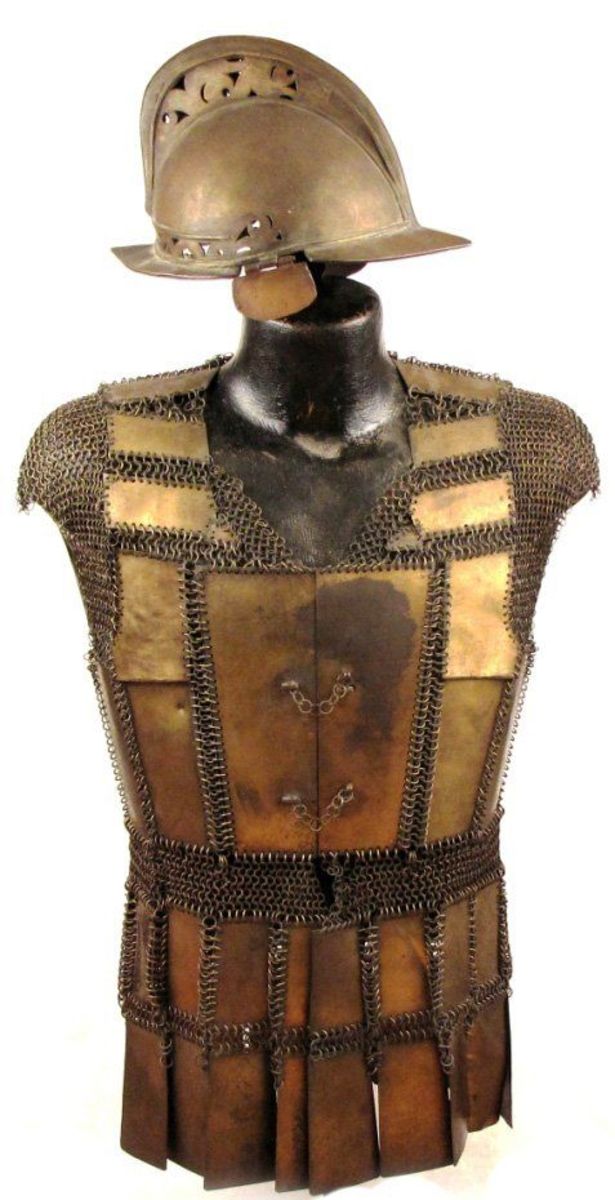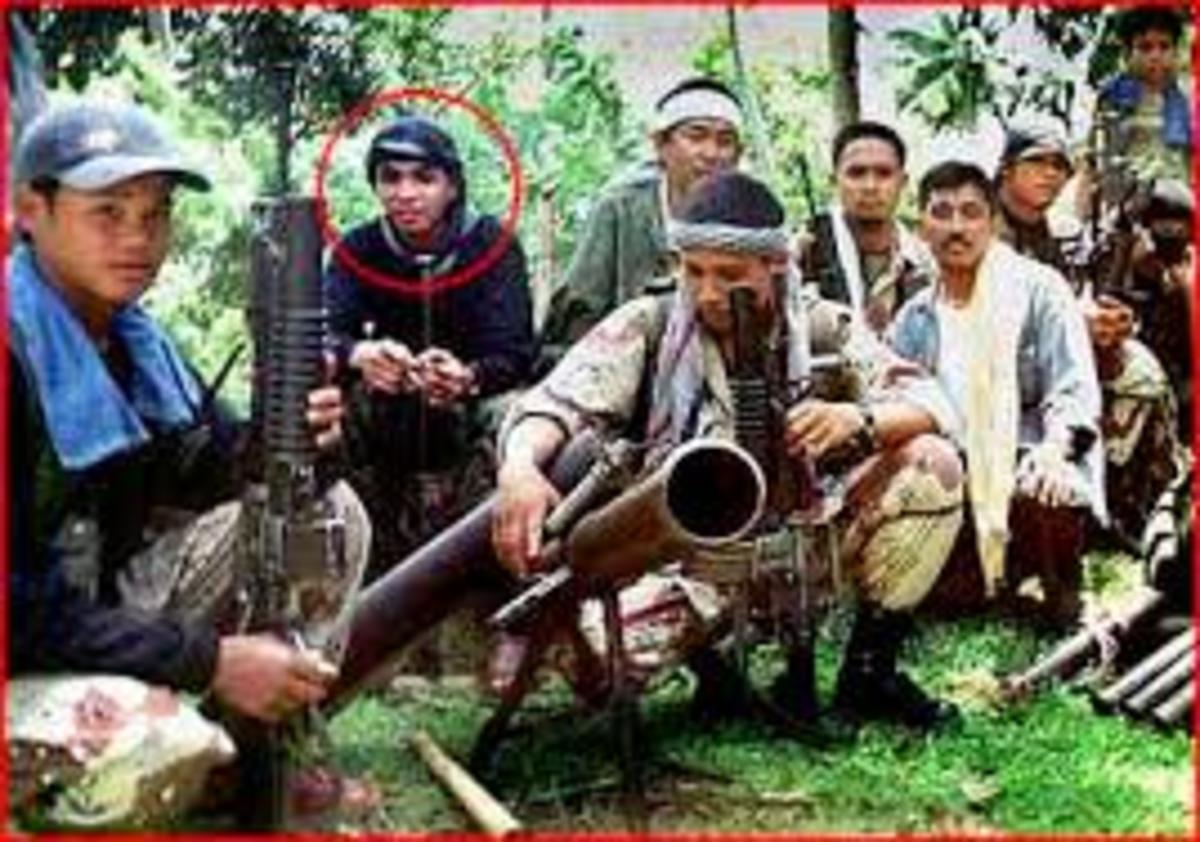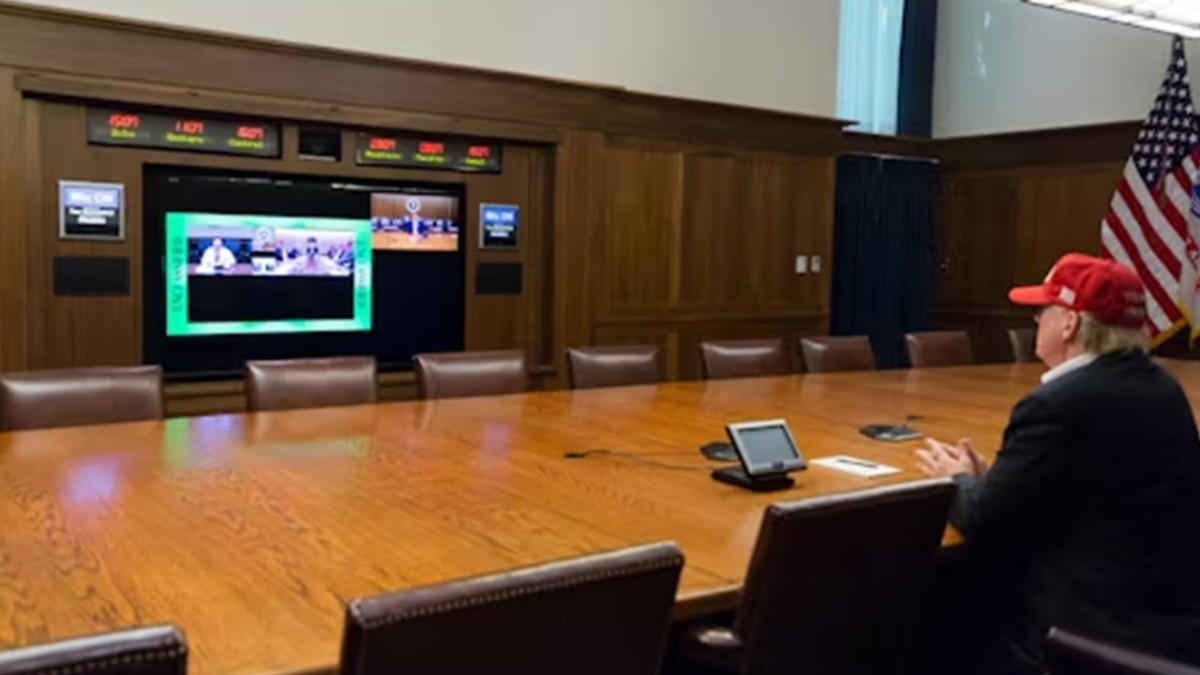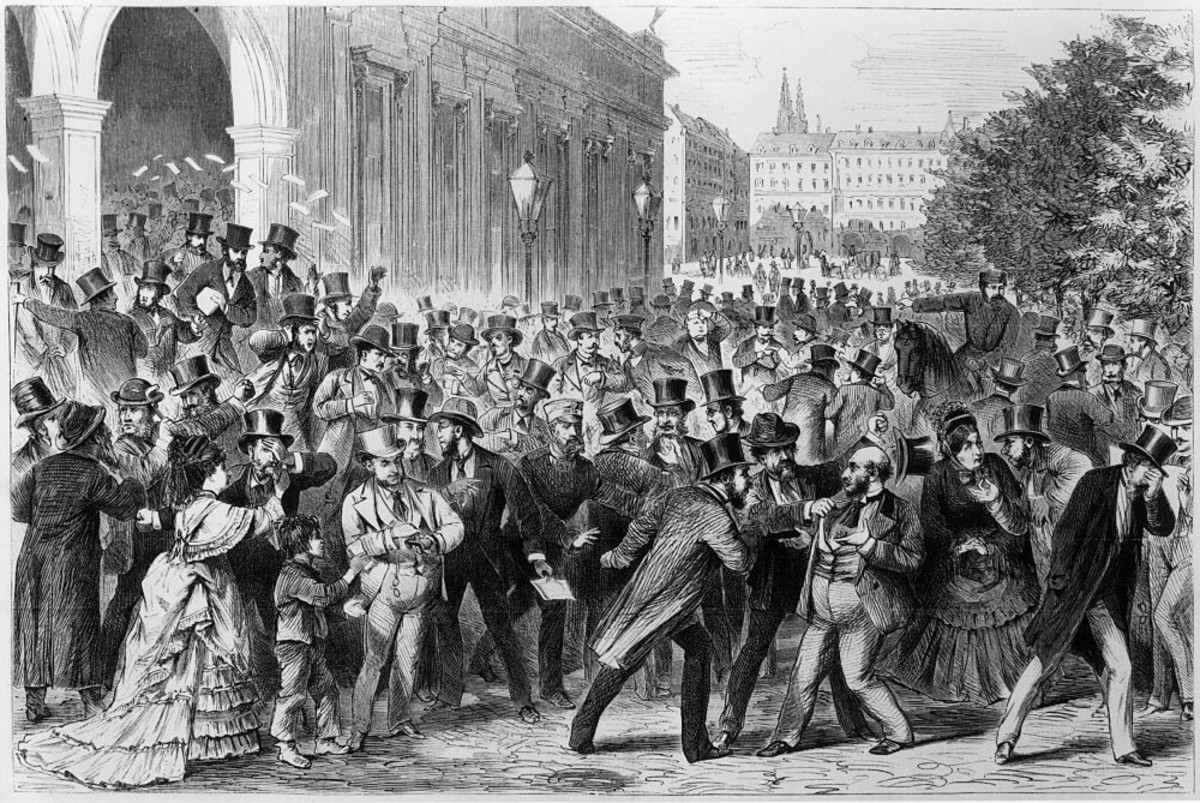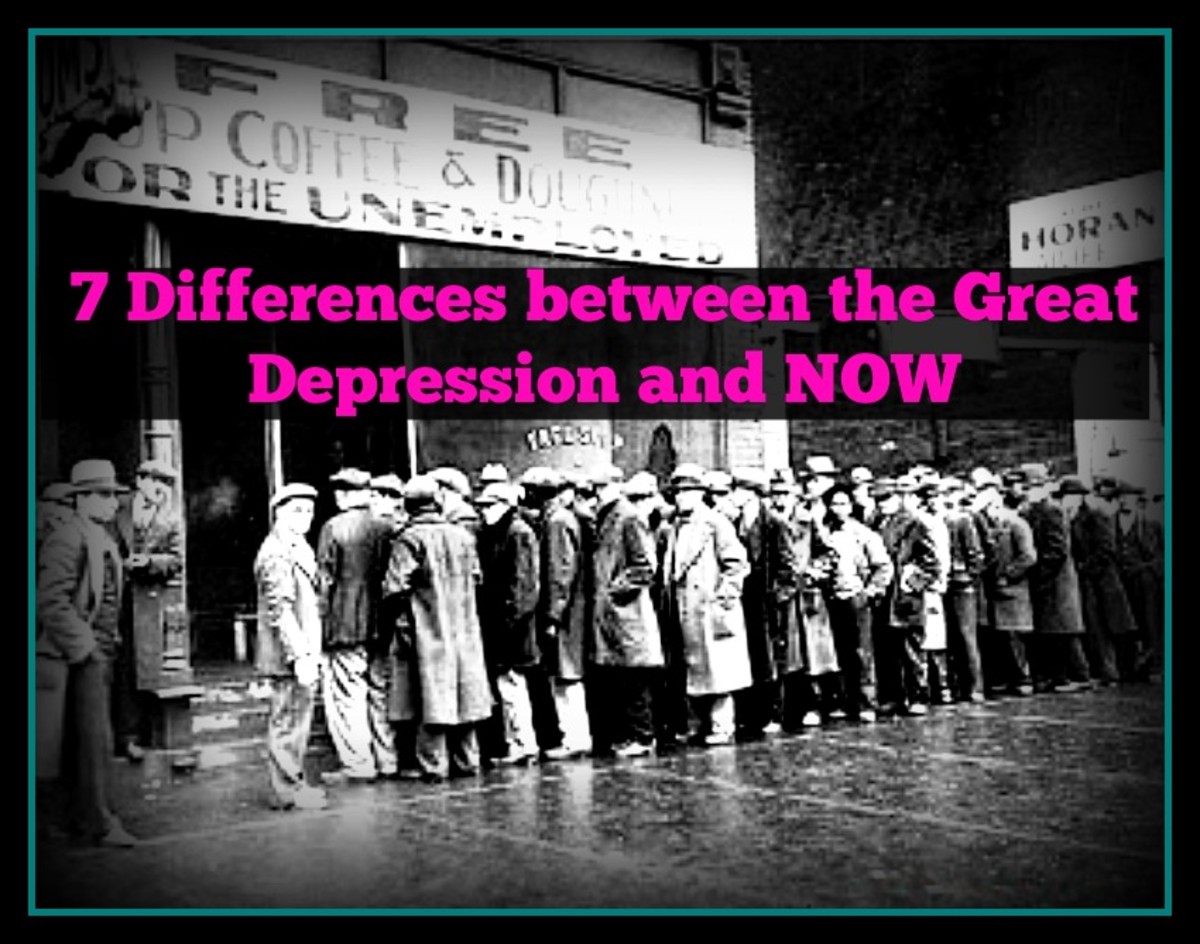Philippine Agrarian Problem to Mindanao Crisis
Agrarian unrest to Crisis
Agrarian Unrest
Agrarian problem in the Philippines started when the Spaniards set foot on Philippine soil. The numerous petty rebellions as history would show are proofs that agrarian problem is not new. Yet our government officials never learned from history. The insatiable desire of the landed elites to amass more lands never end. The laws to benefit the colony were never implemented by unscrupulous Spanish officials. The friar’s longing for funds from their large estates to support their missionary zeal added to this dilemma.[1] The coming of the Americans did not change the situation. The American collaborators were given the opportunity to enrich themselves while telling the world of their benevolence assimilation policy.[2] The years prior to the Japanese Occupation witnessed agrarian related unrest in Luzon and in the Visayas.[3]
The Japanese Occupation
Just as the Huks were able to make the war with the Japanese as their actual training opportunity in armed struggle and to gather up arms, the same was true in Mindanao. The Moros were also able to gather as many arms that they could.[4] Since majority of the Moros who fought against the Japanese were not inducted into the USAFFE but as recognized guerrillas only (except for the group of Pendatun and a few others), the government had no way of knowing the number of arms and ammunition they were able to acquire. Except the arms and ammunition issued to the USAFFE members the Moros did not surrender their weapons that became part of their armory used against the Christians later.
Postwar
The agrarian problem was so severe that it became the rallying point of the postwar Huk or HMB (Hukbong Mapagpalaya ng Bayan) rebellion that (according to exaggerated reports) almost topple down the established government. Yet, the Moros just like during the time of the Philippine Revolution did not do anything because there was no agrarian problem in Mindanao.[5] When the Huk or HMB rebellion was over, the government resettled the rebels who surrendered to Mindanao through their resettlement program to ease the tension in Central Luzon. This solution was similar to what the Americans implemented early in the century order to neutralize the unrest in Luzon and the Visayas. The Moros did not react right away for they found an easy source of farm workers. But the number of new settlers grew that they became only a minority in their own territories. The migrants prospered in their midst, while they remained impoverished. Thus, they accuse the government of neglecting them.
Land Reform Laws
The following are the different laws passed from the American period until Martial Law Regime. If we have to analyze carefully the implications of these laws we will realize that they were intended to serve the landed few and not the landless majority.
- Philippine Bill of 1902 – This bill limited private individual landholding to 16 hectares and 1,024 hectares to corporate landholdings. However, it gave the Americans the right to acquire and own agricultural lands giving them the opportunity to control large tracts of lands for large-scale farming.
- Land Registration Act of 1902 – Landowners were required to register their landholdings and acquire Torrens titles. However, small farmers were not aware of the law or too poor to pay for the documentation failed to register their ownership of their lands. Since their lands were not registered, unscrupulous individuals applied for ownership through fraudulent surveys.
- Friar Land Act of 1903 - Taft Commission purchased from the religious orders of the so-called friar estates that amounted to $7 million for 400,000 acres. Small portion were sold to 60,000 tenants and the bigger portion were allocated to the veterans of the 1896 Revolution. This was intended to diffuse the unrest that resulted in the 1896 Revolution. However, the greatest beneficiaries of these law were the men of Aguinaldo, while the small farmers could not understand why they have to pay for the land that their fathers owned.
- Public Lands Act of 1903 – This Act offered Filipinos up to 16 hectares of uncultivated public land through the homestead program. However, there was no financial assistance to the settlers and the government was also slow in conducting surveys. Because of this, the settlers could not show any document that would prove his ownership of the land he is farming. Again, unscrupulous individuals took the opportunity to register these lands.[6]
- Land Registration Act of 1905 – An Act for issuing land titles that limits to three titles only. The hidden agenda behind it was to determine the limits of private lands and classify those beyond them as public lands under their arbitrary disposition and control;
- The Cadastral Act of 1907 – was passed to carry out further the U.S. seizure of land. This is just another way of knowing what lands are cultivated but were not registered.
- Commonwealth Act 4113 or the Sugar Tenancy Act of 1933 – was approved to regulate the sugar tenants and landlord relationships. Tenants were not aware of this law or dismissed if they demand so much rights under this law. The Negros and Panay tenants were the ones affected by this.
- Commonwealth Act No. 21 in 1936 – The law authorized Quezon to purchase homesites on large landed estates for resale to occupants and called for the appropriation of one million pesos for the purpose. Only in 1939 when he created the Rural Progress Administration to implement it and was dissolved in 1950. It acquired 37,736 hectares only.
- Republic Act No. 31 – Provided for 70-30 sharing if the tenant provided for his own work animal (70% of the harvest goes to the tenant and 30% to the landlords).
- Rice Tenancy Act in 1933 (Act No. 4054) - Provided for 50-50 sharing, but it only took effect in 1946.
- *National Land Resettlement Administration was organized in 1939 in order to operate two settlement projects in Southwestern Mindanao and one in Cagayan Valley that were designed as exile areas for rebellious peasants.
- *Land Settlement Development Corporation (LASEDECO) in 1950 was also created to resettle landless peasants in Mindanao.
- *Economic Development Corps (EDCOR) was also a resettlement project that brought farmers and peasants to Mindanao.
- Agricultural Tenancy Act of 1954 (RA No. 1199). This was the land reform program of Pres. Ramon Magsaysay concerned with rent and interest rate reduction and the resettlement of the Huk rebels. It limited rent to 30 percent at eight to ten percent a year, but it was a failure under his successor.
- *National Resettlement and Rehabilitation Administration (NARRA) in 1954. The creation of the NARRA is one of the provisions mandated by RA No. 1199 under the government of Magsaysay in order to neutralize the agrarian unrest in the Huk covered areas in Luzon. Those who surrendered were uprooted from their lands and resettled in Mindanao and somewhere else.
- Agrarian Relations Act of 1954 is the law that sets the 30% sharing of the harvest after deducting the expenses.
- Land Reform Act or 1955. It created the Land Tenure Administration for expropriating landed estates whose size exceeded the maximum retention limit of 300 and 600 hectares. But it was not able to leap off because of the lobbying of the landlords in congress. This is the famous “Land for the Landless” Law.
- The Agricultural Land Reform Code of 1963 (RA No. 3844). It sets an order of priority in expropriating lands but it only covered rice and corn lands:
a. idle or abandoned lands;
b. those whose area exceeds 1,024 hectares;
c. those whose area exceeds 500 hectares but is not more 1,024 hectares;
d. those whose area exceeds 144 hectares but is not more than 500 hectares; and
e. those whose area exceeds 75 hectares but is not more than 144 hectares.
Under this code the offices of the National Land Reform Council and the Land Authority were created. Three years after the approval of the Land Reform Code that the Land Bank was organized that later received only 13.6 million pesos out of the 400 million pesos that was supposed to have been appropriated to it. From 1966-1969, the bank was only able to buy 10 agricultural estates of about 997.6 hectares.
The National Agricultural Council was created and abolished the Share Tenancy and replaced it with Leasehold System that is merely similar with the Share Tenancy System.
Credit institutions like the Agricultural Credit and Cooperative Financing Administration and private rural banks were established but all of these offices served the landlords, merchants and politicians than the peasants.
The Agricultural Credit Administration has taken the function of the ACCFA but no fundamental changes happened.
The Agricultural Land Reform Code assured the farm works of the daily minimum wage that the hacenderos did not follow
- Code of Agrarian Reform in 1971 - Marcos changed the Land Reform Code to Code of Agrarian Reform through Rep. Act. No. 6389. Rep. Act. No. 6390 on the other hand created an agrarian reform’s special account that encourages the creation of cooperatives later known as Samahang Nayon.
- PD No. 2 on 26 September 1972 – declares the entire Philippines as a land reform area.
- PD No. 27 on 21 October 1972 –declares all share and lease tenants as owners of “family-sized farms of five hectares if not irrigated and three hectares if irrigated.”
- PD No. 57 on 19 November 1972 – exempts the landowners from taxes the proceeds from land transfer.
- DAR Memorandum on 2 January 1973 –declares that leasehold should prevail over all rice and corn lands pending land transfer and that share tenancy is illegal for these said lands.
-
21 October 1973 Land Transfer – which was previously covered landholdings over 50 hectares of rice and corn lands, was extended to holdings from 50 down to 24 hectares.
The different laws and memoranda outlined above show the weakness of the agrarian and land reform laws in the Philippines. The oligarchs that controlled the legislative body through the sponsorship of the Americans saw to it that their land holdings will never be affected. But the programs that made a great impact on the Moros were implemented by the following offices; 1) the National Land Resettlement Administration in 1939, 2) Land Settlement Development Corporation (LASEDECO) in 1950, 3) Economic Development Corps (EDCOR) a resettlement project, and 4) National Resettlement and Rehabilitation Administration (NARRA) in 1954 was created in line with RA 1199. These offices implemented the resettlement programs of the government that brought more people in Mindanao. These resettlement sites are in Lanao and in Cotabato (in the present North and South Cotabato areas). The influx of tenants, peasants and seasonal workers in these areas awakened ethnocentrism due to “intense competition between ethnic groups for the occupation of social niches.”
Neo-colonizers
The resettlement programs of the government as part of the “civilizing mission” increased tremendously the population of Mindanao from 2,010,223 in 1948 to 6,294,224 in 1970.[7] However, this was not the start of the migration to Mindanao as argued earlier. As early 1913 internal immigration to Mindanao was encouraged through official resettlement programs of the Americans. There were 357 people per year that moved to Mindanao through the National Land Settlement Administration. More people came later as a result of improved roads and other infrastructures. After 1935, resettlement was encouraged not just to relieve the going tension and the population growth in Luzon but it was also conceived as a means of “civilizing” the Muslims and other indigenous peoples in Mindanao[8] through what I called as internal “cultural imperialism,” and internal colonization or neo-colonization. Evidence of social tension was already emerging in the early decades of the 20th Century because of internal migration.
The EDCOR resettlement scheme was basically a strategy of the government to soften the Huk supporters. But it also encouraged more people from other parts of the country to migrate to Mindanao, so that by late 50s there were more Cebuano speakers in Mindanao than in Cebu itself,[9] and by “1975 census 6 million of Mindanao’s 9.7 million people had their origins in Luzon or the Visayas.”[10] By 1960s some 3,200 migrants per week arrived in Mindanao. The prewar settlers, the Lumads and the Moros found themselves dispossessed of their lands through dubious collaborations of community leaders with the newcomers. These new settlers found themselves being taxed by local datus simply because the area was formerly their ancestral lands. To get away from this problem the new settlers applied for the titles of the land they are tilling making them owners of the lands they are farming. As stated somewhere in this study, the Muslims did not understand this. For them all lands are God (Allah) given. Tension between the new settlers and the Moros began to surface. There were those who took the opportunity of the tension prevailing in the resettlement sites by raiding isolated Christian settlers and robbing them of their harvest and their working animals. Illegal logging operations that also flourished during this period destroyed the natural resources of the traditional homeland of the Indigenous Peoples. Those who were able to amass big landholdings and succeeded in entering politics, hired goons and private armies, while the Muslims and tribal groups (i.e., Pulangions) organized themselves along kinship system. Thus, the cattle-rustlers and farm raiders were known by the names of their families or tribal group rather than by their group’s names.
Christian Response
Case # 1
In the later part of 1960s, the family of Santos Navigar migrated to Wao, Lanao del Sur because their homestead in Cotabato was plague with numerous cattle rustlers and farm-raiders. They stayed in the Muslim Village in Wao and the only Christian family among the Maranaos. Navigar and his family worked on the land owned by Datu Tao, the traditional leader of the Royal Clan of Wao. They gained the respect of the Maranaos because they are honest in dealings with them. When the Moro resurgence started, and cattle rustlers took refuge in the village, Navigar’s carabao was one of the victims. The people around knew who took his work animal but refused to tell him, least they will get the ire of the culprits. Navigar, search for his animal and found it in the residence of one of the rustlers. He took his animal and walked without saying anything. Later, when asked about this incident, he said that he did not say anything because it would have put the rustler into shame and putting a Maranao to such a predicament is enough reason for his death.[11]
Case # 2
When the MNLF started to attack Christian settlers in Wao, Lanao del Sur in the middle of the 1970s, Guillermo Ganancial was the first victim in Wao. One night, at around 11 PM, they were awakened by the commotion of their work animals. As they started to scamper for their weapons, Garand cal. 30 M1 and homemade shotguns, they observed that there were a number of nozzles of guns inserted in the walls of their hut. They ignored the commotion and pretend to sleep. They found out later that all their work animals were taken away by the cattle rustlers. They solicited the help of their Maranao landlord but only one was returned.[12]
Case # 3
The younger sister of Bernardo Baylosis, a nun, came home for the Christmas to visit her parents and spend the holidays with them. At this time the Moros in their areas started raiding the Christian settlers. To defend themselves they organized their home defense units. Every night they assigned guards to look into their security in case of raids. Whenever one observes that somebody is stealing their carabaos, he must warn others by lighting the torch they planted in front of their houses, until such time that the whole village is surrounded by lights. In this manner they were able to catch cattle rustlers.
Then the unexpected happened. While Baylosis and some of his friends were visiting a neighboring barrio the raiders came. They tied his parents to the post of their house and raped his sister in front of them. Thinking that she is dead, they cut her right breast and shoot his parents. When Baylosis came home, he found his parents dead and his nun sister almost dead. He did not know what to do to find justice for his family. From that time on the different home defense units were strengthened and assumed the name Ilaga. His sister did not die but joined the anti-Moro group under the nom de guerre Commander Ligaya.[13]
According to the Fact-Finding Mission Report, “The Ilaga, literally meaning rat, is a ragtag band of pseudo-religious cultists, mostly of Ilongo (Visayan) descent founded in the late 60’s by Bernardo Baylosis, popularly known as Commander Toothpick. The Ilaga is derived from an eclectic amalgamation of folk culture, animism, distorted Christianity and Islam. The central focus of this cult is the belief that certain rituals and objects will make its members invincible. Commander Toothpick himself was said to have received an amulet from a mountain hermit.”[14]
In the work of May he alleged that the Ilaga was organized by an ex-PC named Manuel Tronco under the blessing of the PC Commander of Cotabato named Carlos Cajelo who subsequently became governor. They were both Ilonggos.[15] However, according to Commander Ligaya,[16] the sister of Commander Toothpick or Bernardo Baylosis and corroborated by the account of Commander Joe (named withheld) the Ilaga was basically organized as a home defense unit of the new settlers in response to the raids and cattle-rustling activities of the Moros. Nuñez has the same findings, except that the term “lawless” description of the Ilaga is a term of contention[17] not because they were allegedly sanctioned by the government[18] but the Moro raids and cattle rustling were as lawless as the operations of the Ilagas but the Moros were never accused as such. Anyway, the Ilaga became the model in the organization of the CHDF or the Civilian Home Defense Force later.
The Ilaga was disbanded when Toothpick surrendered sometimes in mid-70s. Marcos assigned him and his sister Commander Ligaya as agrarian problem troubleshooters. That was the time when I met Commander Ligaya when she went to settle the land disputes in Malagana, Balingasag, Misamis Oriental. It was later alleged that Toothpick died in Surigao, but others do not believe the story. But it did not end the story of the Ilaga. Not all of the members laid down their arms. They hide them ready to be used again once the atrocities will commence. But because the members were also relocated in other parts of Mindanao as they were identified in Cotabato, they are still ready when called to duty. Some splinter groups appeared with different names. The most famous of them is the Sagrada Corazon de Jesus or the so-called Tadtad (hacking). They are found in Muslim areas where there are Christian residents, in Iligan City, Zamboanga peninsula, Basilan and even in Misamis Oriental. I met a certain Boy (name withheld), who told me about the presence of Ilaga members in Basilan.
The land reform programs under the succeeding presidents did not solve the problem as well. The Martial Law of Marcos even brought more problems than solution. The allowed landholdings of the farmers became even smaller while the landlords who could manipulate the law were increasing their landholdings. The Aquino administration on the other hand did not help alleviate the problems of the peasants. Even their family owned hacienda, the Hacienda Luisita that supposed to be the model for the CARP was converted into a corporate farm where tenants were being paid farmers or workers and not as tenants.
The Mujahiden (The Holy Warriors)
The roots of the encounters between Muslims and Christians in Mindanao started even way back during the Spanish regime when the colonizers sent to Mindanao the Christianized Indios to fight the Moros. The present started when the government sent to the south the peasants, farmers and the Huks (HMB) who surrendered after their uprising in Luzon and the Visayas. As stated earlier, majority of those who settled in what is now North and South Cotabato came from the Ilocos, Panay and Negros. The Maguindanaons at first welcome them and some even bartered their lands with goods from the new settlers. However, tension arose when the natives of the area started demanding that they would like to get back their lands since they are already productive, which the settlers refused because they had already spent so much money and efforts to develop their farms.[19] The Moros started harassing them and stealing their harvest and work animals. The Christians responded and they organized the Ilaga (rat or pejoratively, Ilongo-Ilocano LAnd Grabbing Association ).[20] The organization of the ILAGA coincided with the training of the MNLF Top Ninety in Malaysia, so much so, that when the offensives of the MNLF started, their baptism of fire happened to be against the Ilagas and not with the government forces.[21] Because of the hatred of the Ilagas against the Moros and their skills in battles, politicians hired them in their private armies.
But in the eyes of the Moros this is not the cause of the present problem in Mindanao. For them this present Jihad or Holy War is divided into three phases:
First Phase: the Moro Jihad against the Spanish invasion (1521-1898) 377 years.
Second Phase: the Moro Jihad against the American colonisers (1898 - 1946) 47 years.
Third Phase: the Moro Jihad against the Philippine crusade (1970 - present).
Since the granting of the Philippines Independence in the year 1946, the Manila government launched “settlement programs” for the Christians from Luzon and Visayas in the Moroland. Prior to that the Moro Muslims had been enjoying the administration of the region by themselves as the Provincial governors, the Municipal mayors and the Barangay captains were among themselves. The Christian settlers, with the assistance of the Manila government, started to take over the strategic politic and socio-economic posts soon after their influx into the Moroland.[22]
It is clear from this statement of Hashim Salamat that they have a different view of Philippine history and their history. There is no commonality of the struggle of the Filipinos and their struggle. Thus, the least importance of history as a subject in schools appeared to have contributed to the Mindanao problem. The opening of Madrasahs (private Islamic Schools), further advances these teachings. These and other factors, i.e. neglect of the government, dragged the problem too long with no solution at hand as shown by the emergence of the new MNLF splinter group, the MNLF-ICC (Islamic Command Council).
MNLF
According to Rudy B. Rodil, a member of the GRP-MNLF negotiation panel, The Moro National Liberation Front (MNLF)-led revolution:
was the maturation of a series of Moro protests against the discriminatory treatment that they experienced within the Republic, the most infamous being the Jabidah massacre wherein an undetermined number of young Moro recruits undergoing secret military training in Corregidor were massacred for alleged mutiny. . . but the groundswell of Moro protests spiced with reports of secret military training became one of two excuses for President Marcos’ declaration of martial rule. Martial law for its part provided the valve for the eruption of the Bangsamoro armed struggle for national liberation from the clutches of alleged Philippine colonialism.[23]
The trainees code named Jabidah Forces, were composed of Muslim youth, trained in Corregidor Island for marine maneuver and attack to penetrate and reclaim Sabah,[24] as well as to split the Islamic ranks. This was the last option of Marcos if the Malaysian government rejects the peaceful settlement of the Sabah Case. The lone survivor of the Jabidah Massacre on March 18, 1968,[25]explained that the trainees were shot after they refused to invade Sabah. This incident was the eye-opener of the Muslims that the government did not care for them if it is for the security of the state. The first to react to this incident was Datu Udtog Matalam of Cotabato. He declared the Mindanao Independence Movement or MIM.[26] Other Moro aristocrats and politicians thought of organizing a guerrilla type organization to defend Mindanao. Then Congressman Rashid Lucman, according to Nuñez “responded to a Malaysian offer to train and arm dedicated young Moros for war against Manila.”[27] Negotiations were done and the first trainees, according to instructions must come from the villages.[28] However, the trainees were all “City boys,” called the “Top Ninety.”[29] The Moro aristocrats and politicians were mad upon learning that the trainees were educated ones. But they could not do anything because they already left. This group later on is known as the MNLF or the Moro National Liberation Front. It is perhaps the reason why Lucman organized the Bangsa Moro Liberation Organization,[30] in anticipation of the possible moves of the educated Moro youths sent for training to Malaysia. However, in the study of Taher, he wrote that “the selection of the Top Ninety was based on the recruit’s physical and intellectual capabilities to spearhead and implement a guerrilla-type warfare in their respective territorial jurisdictions with the ultimate goal of maintaining the nationhood and independence of the Bangsa Moro Homeland.”[31] I was by a member of the Top Ninety, that in they were not the only group being trained for clandestine operations. There were other nationalities too, and their trainers were mostly British Army Officers.[32]
What the Moro aristocrats and politicians were afraid of happened. The trainees organized themselves into the Moro National Liberation Front, with Nur Misuari, Hashim Salamat and Abulkhayr Alonto as the prominent figures. Misuari was a UP professor, Hashim Salamat, an active student leader in Cairo University and Alonto, the son of former Senator, Domocao Alonto Sr. It was at first, Muslim National Liberation Front, but since their ultimate aim is the liberation of the whole Mindanao from the imperial Manila, they changed it to Moro because anybody coming from Mindanao, is considered by Manilans as a Moro, whether he is a Muslim or not.[33] The organization of the MNLF implied the breakaway of the youth from the traditional-politicians who happened to be their benefactors of their training. Another feared event that came true was the proclamation of Martial Law. But, the politicians did not read Marcos right. Marcos solicited for their help. Hence, Princess Tarhata Lucman was appointed Governor of Lanao del Sur, but soon relieved by Mohammad Ali Dimaporo, because Jamil Lucman and Abulkhayr Alonto refused to surrender. Sooner, however they surrendered. Alonto (1978) was appointed as ambassador and Pundato[34] (1982) was given a position under Marcos. One MNLF commander lamented that they were left fighting while they (the children of prominent aristocrats and politicians) enjoyed appointments in the Marcos government.[35]
The people of Manila and other parts of the country were made to understand that the first encounter between the government and the MNLF was during the October 21st, 1972 Marawi City Uprising. It was not! The MNLF in Lanao was still consolidating their forces and giving training to new recruits at this time. The Marawi City Uprising was the response of the people who did not know about Martial Law to the call of the unscrupulous politicians and the black propaganda of the Muslim religious organizations. These unscrupulous appointed politicians knew already that they would be arrested because of their graft and corruption cases. To solve their problem, they approached the two big Muslim organizations and asked for assistance. After that, the religious organizations started to air over the radio that since Martial Law was proclaimed, the soldiers would come and Christianize the Moros by force. The Maranaos responded and rose in arms with “Allah o Akbar” (Allah is great) as their war cry. Prominent Christian landowners and businessmen in Lanao Sur died in this uprising. The government had no way of apprehending the unscrupulous politicians because they became instant rebel commanders, thus, escaping from the graft and corruption cases. Since then until 1996 the uprising was known as the start of the MNLF offensive operations, though it was not. Sani noted that Misuari capitalized on the Marawi Uprising as an encouragement for the Tausogs to rise in arms.
The rest is history, peace negotiation after peace negotiations were done but nothing tangible happened. Then came the intervention of the OIC (Organization of Islamic Conference) and Libya that elevated an internal problem to international status. The Tripoli agreement was signed in 1976 but Marcos implemented it according to his own interpretation of the provisions of the agreement and issued a decree creating the autonomous region of Mindanao composed of twelve provinces and ten cities. But the Muslims demanded that it should be thirteen provinces but Marcos did not budge. Marcos appointed his loyalist Dimaporo to the post while holding the positions as the governor of Lanao del Sur and Acting-President of Mindanao State University. Differences of policies they claimed are the main reason for the breakup of the MNLF into factions. Hashim Salamat from Maguindanao organized his Moro Islamic Liberation Front (MILF – March 1984), which is fundamentally Islamic in outlook, and the MNLF Reformist Group (1982) under Dimas Pundato, a Maranao, that supported autonomy.[36]
Aquino deposed Marcos and the contribution of her government in peace process was her initial dialogue with Misuari. Her 1987 Constitution provided for the creation of the Autonomous Region of Muslim Mindanao (ARMM) and the signing of the Organic Act of Muslim Mindanao (RA 6734). Peace negotiations started and for several years consultations were made. According to Rudy Rodil:
GRP-MNLF Peace Process
As we all know, the Peace Agreement between the Government of the Republic of the Philippines (GRP) and the Moro National Liberation Front (MNLF) was signed on September 2, 1996. The opening line of the document clearly states: "the final agreement on the implementation of the Tripoli Agreement." It represents the product of four years of exploratory and formal peace talks. It reflects an honest to goodness attempt on both the GRP and the MNLF to come to an agreement on the implementation of the Tripoli Agreement signed nearly twenty years ago on 23 December 1976.
Participants in the talks were the Organization of Islamic Conference Ministerial Committee of the Six and the Secretary General of the Organization of Islamic conference. Indonesia as Chair of the Committee of the Six presided over all meetings.
Agenda of the Talks
As agreed upon in Par. 14 of the Statement of Understanding between the GRP and the MNLF, signed in Cipanas, Indonesia, on 16 April 1993, "the agenda for the formal talks will focus on the modalities for the full implementation of the Tripoli Agreement in letter and spirit, to include specifically:
a. Those portions of the Agreement left for further or later discussion; and
b. Transitional implementing structure and mechanism.[37]
During the early and mid-1990s, the southern Philippines was the site of renewed guerrilla violence by the so-called Muslim separatist forces. In September 1996 the government reached a peace agreement with one of the largest rebel groups, the Moro National Liberation Front (MNLF). The agreement established the Special Zone for Peace and Development (SZPD), consisting of 14 Mindanao provinces. It also provided economic assistance to develop the impoverished region. The following are the stages of the implementation of the peace accord:
Terms of Agreement
After three years of peace negotiations, the two parties signed what is now popularly known as the Peace Agreement of September 2, 1996. There are 154 points of consensus in the Agreement. Let me quote pp. 7-8 of the document itself.
I. "Implementing Structure and Mechanism of this Agreement
Phase 1 shall cover a three (3) year period starting after the signing of the peace agreement with the issuance of Executive Order establishing the Special Zone of Peace and Development (SZOPAD), the Southern Philippines Council for Peace and Development (SPCPD), and the Consultative Assembly.
During this phase, the process of joining in of MNLF elements with the Armed Forces of the Philippines will start. The joining in of MNLF elements with the PNP as part of the regular police recruitment programme will also take place in this phase.
Phase 2 shall involve an amendment to or repeal of the Organic Act (RA6734) of the Autonomous Region in Muslim Mindanao (ARMM) through Congressional action, after which the amendatory law shall be submitted to the people of the concerned areas in a plebiscite to determine the establishment of a new autonomous government and the specific area of autonomy thereof.
While peace and development programs are being implemented in the SZOPAD, a bill to amend or repeal the RA 6734 shall be initiated within Phase 1 (1996-1997). The bill shall include the pertinent provisions of the Final Peace Agreement and the expansion of the present ARMM area of autonomy. After a law shall have been passed by Congress and approved by the President, it shall be submitted to the people for approval in a plebiscite in the affected areas, within two (2) years from the establishment of the SPCPD (1998).
The new area of autonomy shall then be determined by the provinces and cities that will vote/choose to join the said autonomy (1998). It may be provided by the Congress in a law that clusters of contiguous-Muslim-dominated municipalities voting in favor of autonomy be merged and constituted into a new province(s) which shall become part of the new Autonomous Region.[38]
But the Peace Accord or the SPCD did not end the war in Mindanao. When one surrenders others continue the struggle until their goal is attained.
(For the documentation please contact the author)


